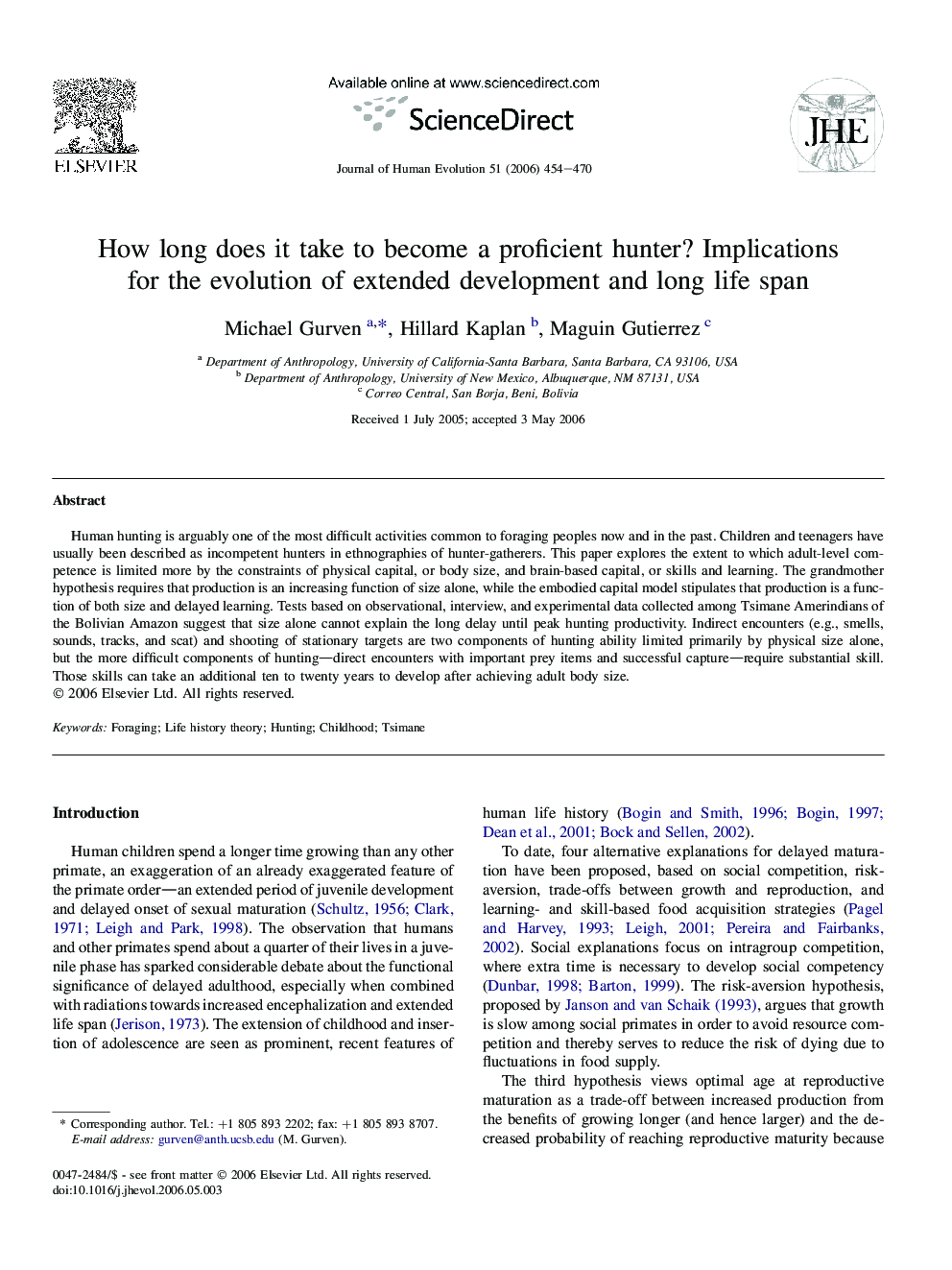| کد مقاله | کد نشریه | سال انتشار | مقاله انگلیسی | نسخه تمام متن |
|---|---|---|---|---|
| 4556971 | 1329516 | 2006 | 17 صفحه PDF | دانلود رایگان |

Human hunting is arguably one of the most difficult activities common to foraging peoples now and in the past. Children and teenagers have usually been described as incompetent hunters in ethnographies of hunter-gatherers. This paper explores the extent to which adult-level competence is limited more by the constraints of physical capital, or body size, and brain-based capital, or skills and learning. The grandmother hypothesis requires that production is an increasing function of size alone, while the embodied capital model stipulates that production is a function of both size and delayed learning. Tests based on observational, interview, and experimental data collected among Tsimane Amerindians of the Bolivian Amazon suggest that size alone cannot explain the long delay until peak hunting productivity. Indirect encounters (e.g., smells, sounds, tracks, and scat) and shooting of stationary targets are two components of hunting ability limited primarily by physical size alone, but the more difficult components of hunting—direct encounters with important prey items and successful capture—require substantial skill. Those skills can take an additional ten to twenty years to develop after achieving adult body size.
Journal: Journal of Human Evolution - Volume 51, Issue 5, November 2006, Pages 454–470